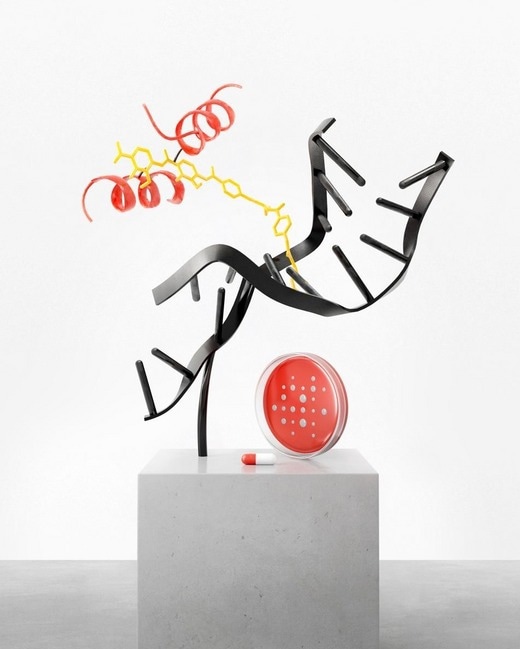One of the most promising new antibiotic candidates in decades is a powerful plant toxin that harbors a novel way of killing hazardous bacteria.
 A sculpture that represents albicidin binding pocket, antibiotic pill, and Petri dish to symbolize a threat caused by bacteria. Image Credit: Alina Kurokhtina.
A sculpture that represents albicidin binding pocket, antibiotic pill, and Petri dish to symbolize a threat caused by bacteria. Image Credit: Alina Kurokhtina.
The antibiotic albicidin is generated by the bacterial plant pathogen Xanthomonas albilineans, which causes the destructive sugar cane leaf scald disease. The pathogen is considered to employ albicidin to damage the plant, allowing it to spread. Albicidin has long been acknowledged to be particularly effective at killing bacteria like E. coli and S. aureus. These superbugs, which are renowned for developing resistance to conventional antibiotics, have created an urgent need for efficient new drugs.
Albicidin’s pharmaceutical development has been impeded despite its antibiotic potential and minimal toxicity in pre-clinical trials since researchers did not know how it interacted with its target, the bacterial enzyme DNA gyrase (gyrase) This enzyme attaches to DNA and twists it up (a process called supercoiling) in a sequence of elegant movements—a necessary procedure for cells to operate properly.
Dr Dmitry Ghilarov’s team at the John Innes Centre, in collaboration with Prof. Roderich Süssmuth’s laboratory at Technische Universität Berlin, Germany, and Prof. Jonathan Heddle’s lab at Jagiellonian University, Poland, have used advances in cryo-electron microscopy to procure the first image of albicidin bound to gyrase.
It demonstrated that albicidin takes on an L-shape, allowing it to interact with both the gyrase and the DNA in a novel way. In this state, gyrase could no longer move to join the ends of the DNA. Albicidin has the effect of a spanner placed between two gears.
Albicidin’s interaction with gyrase differs enough from existing antibiotics that the molecule and its derivatives are anticipated to be efficient against several antibiotic-resistant bacteria.
It seems by the nature of the interaction, albicidin targets a really essential part of the enzyme and it’s hard for bacteria to evolve resistance to that. Now that we have a structural understanding, we can look to further exploit this binding pocket and make more modifications to albicidin to improve its efficacy and pharmacological properties.”
Dr Dmitry Ghilarov, John Innes Centre
The effort has already started: the researchers used their findings to chemically synthesize antibiotic variants with improved characteristics. These variants were proven to be effective against some of the deadliest hospital-acquired bacterial infections, including E. coli, Pseudomonas aeruginosa, Klebsiella pneumoniae, and Salmonella typhimurium.
“We believe this is one of the most exciting new antibiotic candidates in many years. It has extremely high effectiveness in small concentrations and is highly potent against pathogenic bacteria—even those resistant to the widely used antibiotics such as fluoroquinolones,” explains Dr Ghilarov.
This molecule has been around for decades. Now advances in cryo-electron microscopy has made it possible to determine structures of even the most elaborate protein-DNA complexes. To be the first person to see the molecule bound to its target and how it works is a huge privilege, and the best reward one can have as a scientist. But this work is a big team effort, and we would not have done it without our European colleagues.”
Dr Dmitry Ghilarov, John Innes Centre
The next stage in this research is to interact with academic and industrial associates, as well as to seek financing to advance the research to human clinical trials. In the face of a global threat of antimicrobial resistance, AMR, this could contribute to the development of an urgently required new class of antibiotics.
Source:
Journal reference:
Michalczyk, E., et al. (2023) Molecular mechanism of topoisomerase poisoning by the peptide antibiotic albicidin. Nature Catalysis. doi.org/10.1038/s41929-022-00904-1.